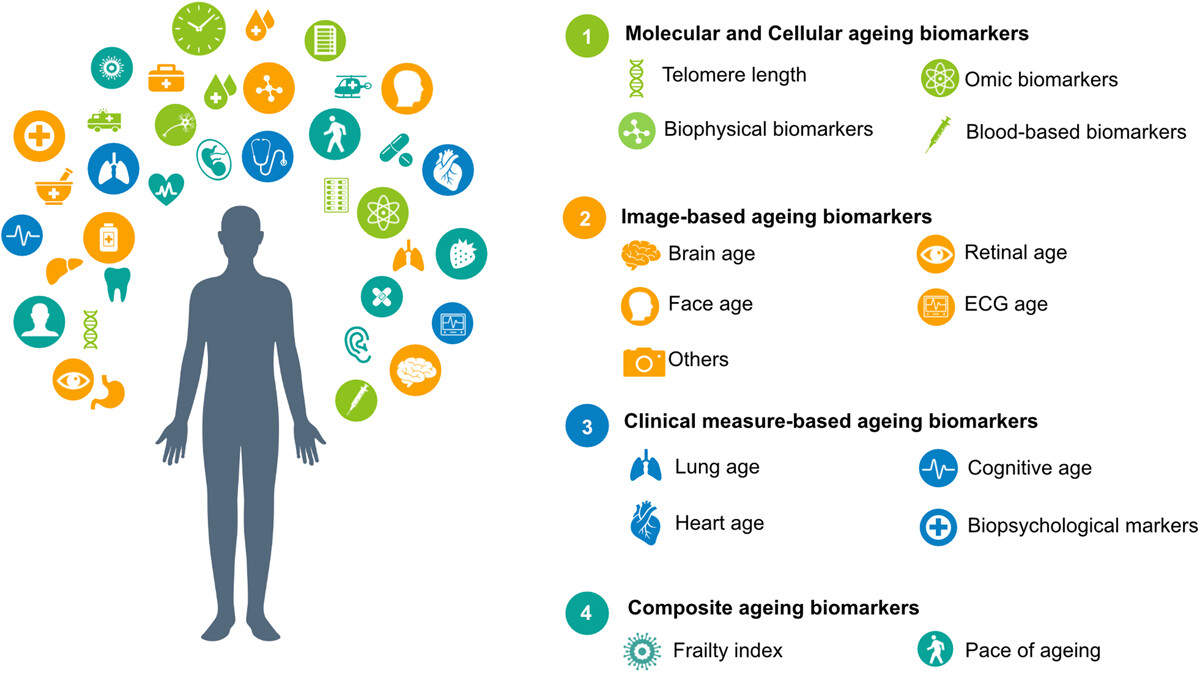MedComm-Future Medicine | Biomarkers of ageing: Current state-of-art, challenges, and opportunities

Open the phone and scan

Ageing biomarkers are categorized based on the data sources utilized, encompassing molecular and cellular profiles, images, clinical measures, and composite data sources. Molecular and cellular biomarkers are further subdivided into telomere length, omics biomarkers, biophysical biomarkers, and blood profile-based biomarkers assessed in clinical practice. Imaging-based biomarkers are classified according to specific human organ imaging, including brain age, retinal age, face age, ECG age, and others. Clinical measure-based biomarkers encompass lung age, cognitive age, heart age, and biopsychological markers. Additionally, the composite age category includes the frailty index and pace of ageing.
Given the unprecedented phenomenon of population ageing, studies have increasing captured the heterogeneity within the ageing process. In this context, the concept of “biological age” has been introduced as an integrated measure reflecting the individualized ageing pace. Identifying reliable and robust biomarkers of age is critical for the accurate risk stratification of individuals and exploration into antiageing interventions. Numerous potential biomarkers of ageing have been proposed, spanning from molecular changes and imaging characteristics to clinical phenotypes. In this review, we will start off with a discussion of the development of ageing biomarkers, then we will provide a comprehensive summary of currently identified ageing biomarkers in humans, discuss the rationale behind each biomarker and highlight their accuracy and clinical value with a contemporary perspective. Additionally, we will discuss the challenges, potential applications, and future opportunities in this field. While research on ageing biomarkers has led to significant progress and applications, further investigations are still necessary. We anticipate that future breakthroughs in this field will involve exploring potential mechanisms, developing biomarkers by combining various data sources or employing new technologies, and validating the clinical value of existing and emerging biomarkers through comprehensive collaboration and longitudinal studies.
Article Access: https://doi.org/10.1002/mef2.50
More about MedComm-Future Medicine: https://onlinelibrary.wiley.com/journal/27696456
Looking forward to your contributions.
Review : Chunhua Li


